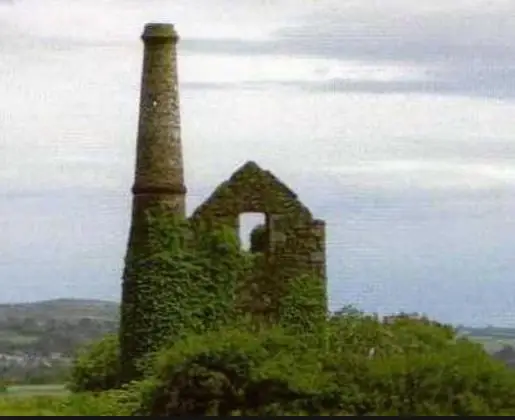source: Cornwall Council
Polgooth mine was active as early as the sixteenth century, initially in the form of a number of
stream works and shallow lode-back works; recorded names include St Margaret’s, Wheal an Crane, St Martyn’s, Poldice, Van Vean and Boskellyn, which appeared in a 1593 list of ‘tyn
works in Mulvera Ball’. These mines were all part of the Polgooth sett, owned by Peter
Edgcumbe in association with a number of prominent Cornish families, eventually including the
Arundell family. The mine was productive from the start and by 1546 a blowing house had been
erected in St Austell to meet its needs – indeed tradition holds that the rise of St Austell was in
large measure due to Polgooth: ‘St. Austell was described as a poor village. It first rose to importance from its vicinity to Polgooth, one of the oldest tin mines in the county, and from the traffic arising from numerous tin streams, both in the parish and in the locality.’ Lake, Vol. 3, 1870.
The mine continued to grow, by 1650 there were 24 separate mines in the Polgooth area (as well as other celebrated early mines nearby, such as the Great Hewas Mine to the west), and its
reputation spread beyond Cornwall. Celia Fiennes, visiting the county in 1695, observed ‘at least
twenty mines all in sight which employs a great many people at work, almost night and day’. By around 1720 the Cornish historian Tonkin described Polgooth as ‘the richest work this day in England or, I believe, that ever was in this kingdom….and the Adventurers have this present year got clear out of the said work £20,000 sterling’. By 1727 Polgooth had one of only five Newcomen engines in Cornwall and the mine was producing 250-350 tons of black tin per year. In 1745 however the price of tin fell forcing the mine to close until 1783 when it was reopened by a new company, which included the Quaker, Edward Fox, and Charles Rashleigh of Menabilly, who had been granted the lease from Lord Arundel. The company ordered a new pumping engine by Boulton and Watt (James Watt was reputed to be living in Polgooth at this time and they were both to become Adventurers), and by 1800 there were more than 1,000 people employed at Polgooth. The success of the mine was alluded to by Lipscomb who noted in 1799 that ‘the profits are immense, the labour of getting out the ore being so inconsiderable’. Charles Rashleigh employed the profits raised by the mine to build a new harbour at Charlestown, and the tin was transported from Polgooth to the harbour by carts.
In 1804 when the lease came up for renewal a dispute broke out between Rashleigh and Lord
Arundel – Rashleigh wished to build a new blowing house, but this was opposed by Arundel who
held shares in the existing blowing house in St Austell. The dispute turned violent and the
pumps were damaged resulting in the partial flooding of the mine. Some ore was extracted from the upper levels but the mine was forced to close in 1810 as the company’s recent disputes made it unattractive to prospective shareholders. Overall however the company made a profit of over £100,000.
.
